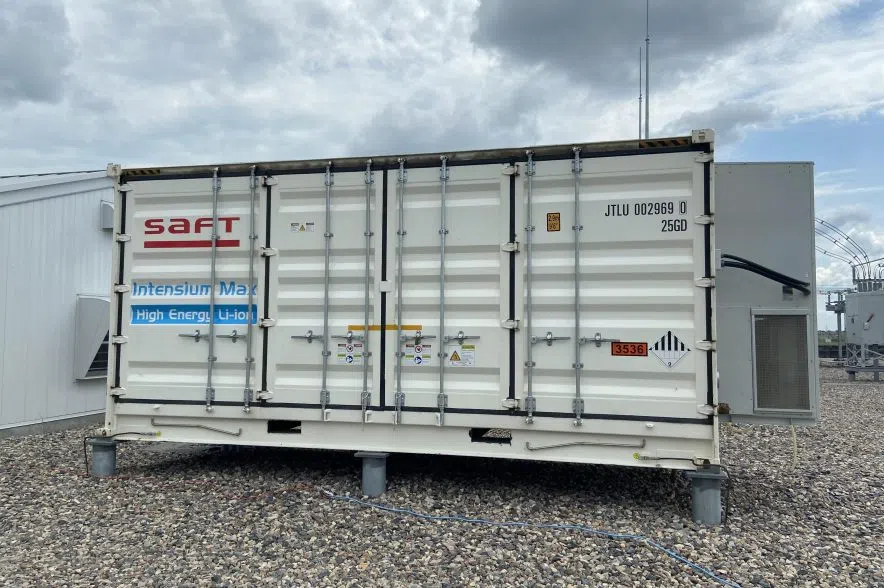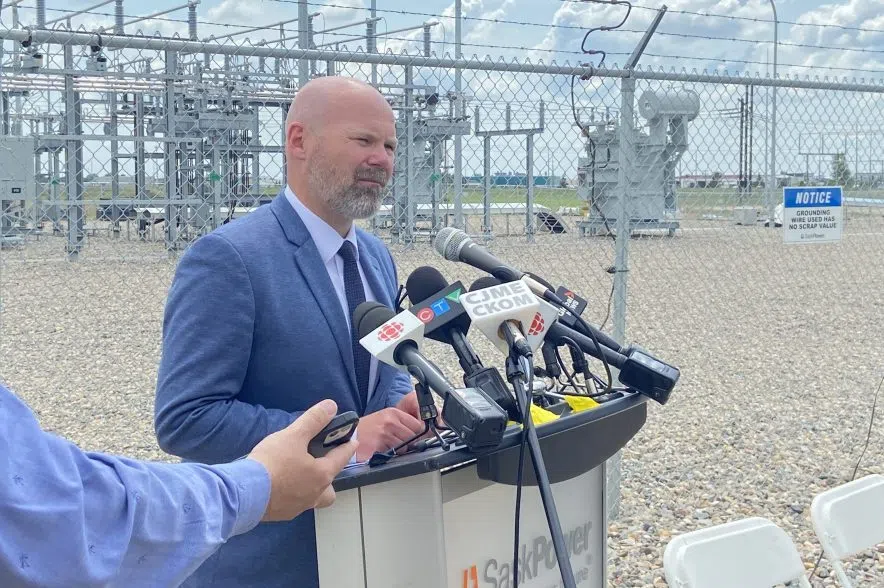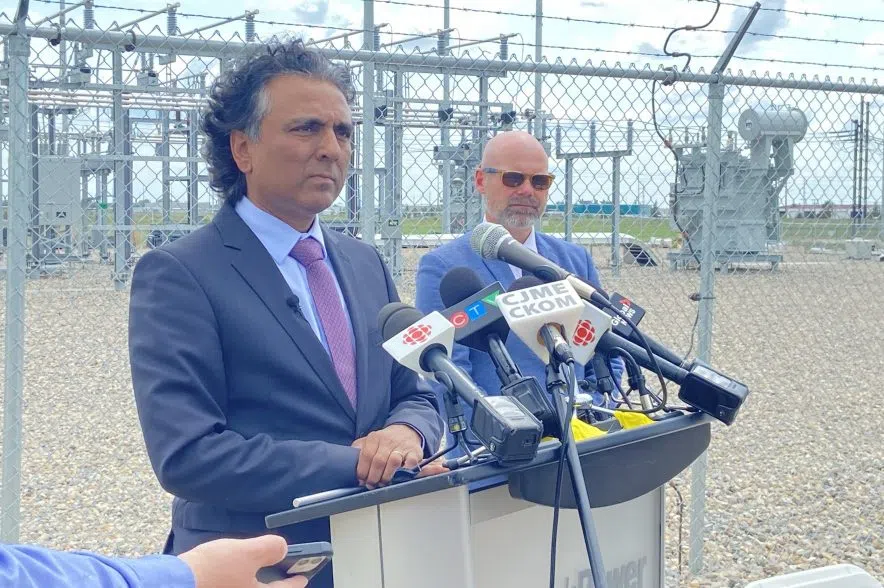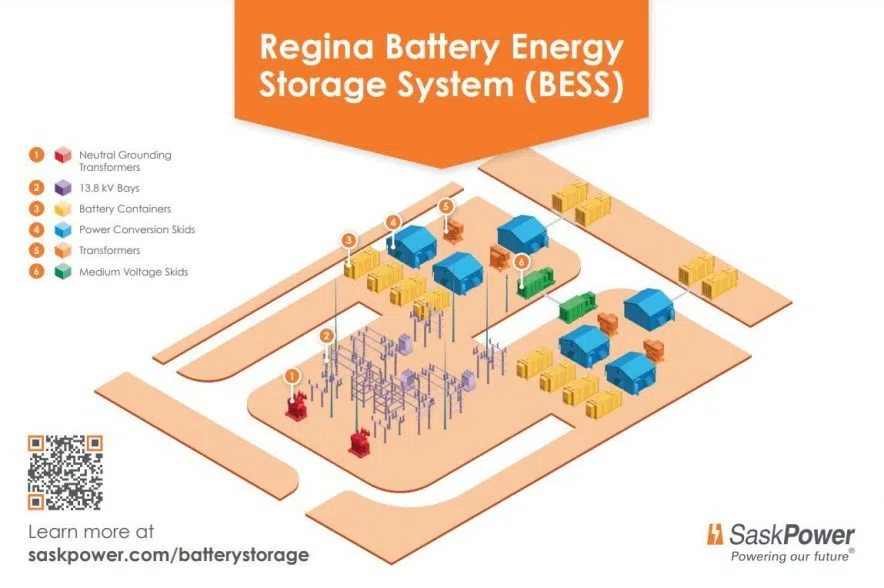It’s about the size of a football field, and it holds enough power to keep the lights on in 20,000 homes for an hour.
SaskPower’s new battery energy storage system is now online in Regina.
The goal of the system is to provide flexibility and balance to the provincial power grid, as well as aid SaskPower meet its greenhouse gas emission goals.
Rupen Pandya, SaskPower’s president and CEO, said the battery system is the first of its kind in the province.
“This is an unmanned facility, and a historic first for SaskPower,” he said.
“It will be operated by a grid operation centre and dispatched as required. If you think about summer and winter peak loads, this will allow us to shave generation off of winter and summer peak loads. It’s also available on demand.”
Power on demand means it could keep homes from going dark during a power outage, but the system will primarily be used to store energy that will be used when demand on the power system is high.
“It can respond instantaneously to power outages, but it will be dispatched strategically by grid control,” Pandya said. “This will provide enough power to 20,000 homes for an hour, or 5,000 homes up to four hours.”
The $34 million facility can also support the deployment of other generation options, such as wind and solar, which can sometimes be unreliable.
READ MORE:
- First Nations Power Authority, SaskPower sign solar power agreement
- SaskPower’s capital spending to hit record $1.6 billion in 2024-’25
- SaskPower signs nuclear fuel supply MOU with Cameco, Westinghouse
“There’s 20 megawatts worth of capacity in these 12 sea cans behind me,” Pandya explained.
“We have wind right now, and it’s nice and sunny, but minute to minute and second to second, wind and solar are highly variable on our grid. In the next second when the wind drops, that impacts the amount of power wind and solar is producing. This type of resource allows us to maintain balance in the system.”

One of the 12 sea can battery containers at SaskPower’s new battery energy storage system. (Nicole Garn/980 CJME)
The life cycle of the battery system depends on how often the batteries are charged and discharged. Panday said 15 to 20 years is the estimated lifespan.
Dustin Duncan, the provincial government minister responsible for SaskPower, said the battery system is important for the future of the province’s power grid.
“This is one more tool in the toolbox for a company like SaskPower that’s looking to first and foremost continue to expand the amount of electricity that we produce,” he said. “We’re a growing province, so there’s greater demand on electrification going forward into the future.”

Dustin Duncan, Minister Responsible for SaskPower said the province can expect to see more battery energy storage systems in the future. (Nicole Garn/980 CJME)
Duncan added that the system is also a key component in SaskPower’s push to reach it’s net-zero goals.
“We need to reduce our emissions, and that’s part of SaskPower’s goal to see a 50 percent reduction in greenhouse gas emissions over the next number of years by incorporating renewables into the system,” the minister said. “And renewables are great, but they’re great obviously when the sun is shining and the wind is blowing. This allows the opportunity for SaskPower… to capture that electricity and store it for a time when it’s needed in the future.”
Duncan said the province can expect to see more battery systems in the years ahead.
“This is the first of its kind for SaskPower, but it’s not going to be the last,” he said. “Certainly SaskPower has plans for adding capabilities in the Regina area (and) likely in the Saskatoon area as well.”












